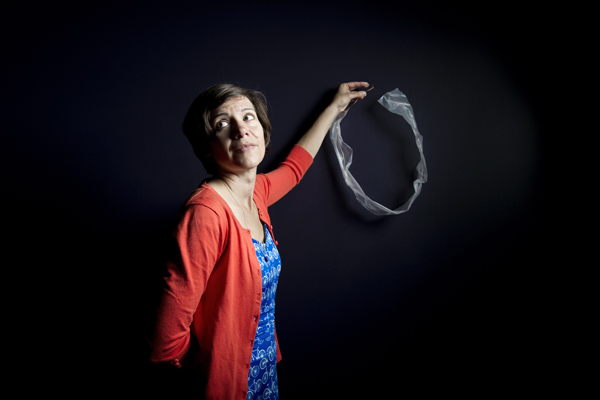A simpler way to test for water pollution

Some of the toxins found in our air and waterways were put there intentionally: DDT, for instance, was introduced to protect against malaria and other insect-borne diseases. Others find their way into the environment unintentionally.
“The chemicals are made for one purpose, but they have been inadvertently spilled into the environment,” said Northeastern University assistant professor Loretta Fernandez, who holds joint appointments in the Department of Civil and Environmental Engineering and the Department of Marine and Environmental Sciences.
Regardless of how they got there, these so-called “persistent organic pollutants” are next to impossible to remove from the habitats in which they end up. No bacteria or other organisms have evolved to break them down, Fernandez explanined, and they can be detected decades after they’re first introduced. This is a problem because the toxins get into the tissues of organisms that live nearby, and they often end up in humans either directly or indirectly, like when we find contaminated haddock on our dinner plates.
To date, there hasn’t been a very good way to determine the levels of persistent organic pollutants in the environment, Fernandez said. A single water sample—which only offers a snapshot of a single place at a fleeting moment in time—would have to go through a series of pumps and filters before any meaningful data could be harnessed; taking a 2,000- to 4,000-liter sample from an entire body of water could take days to complete. Furthermore, researchers couldn’t be sure that the final value captured by this process would be truly representative of the level of contaminant that ends up in live tissues.
“What you want is a measure of the dissolved content,” Fernandez said, “since that correlates directly with what ends up in tissue concentrations.”
For her part, Fernandez has spent the better part of a decade developing a very comprehensive, yet simple, alternative approach. “I just got plastic sheeting from the hardware store for this,” said Fernandez, holding up a device that looks more like a child’s art project than a state-of-the-art research tool.
Fernandez’ samplers act like fake fish, hanging out in a marine environment—either secured in the water column or buried in the sediment below—and collecting the persistent organic pollutants the same way the fishes’ fatty tissues do so: passively.
In one project, a collaboration with researchers at the U.S. Environmental Protection Agency, Fernandez’ samplers are working to capture accurate dissolved concentrations of DDT near the Palos Verdes Shelf off the coast of Los Angeles County. “The Montrose Chemical Company, from the mid 1940s until the 1980s, were discharging their waste through the wastewater outfall,” she said. “This company was the largest DDT factory in the world.” More than three decades after the locale was named the planet’s deepest superfund site and the company ceased its old dumping practices, the chemical is still present in the water at very high levels.
Attempts to remediate the area have focused on overlaying the bottom sediment where most of the DDT has settled with a new layer of clean sand. But with Fernandez’ samplers, the team was able to show that the pilot caps weren’t doing the job as intended. “What we found was that there was no difference between the two,” she said. “We saw the exact same concentrations in the water [at capped sites] as we saw above nearby sediments where there was no cap put down. The reason is that the cap has essentially been recapped by just a small amount of contaminated sediment form elsewhere on the shelf.”
The conclusion, she said, is that remediation isn’t as simple as sprinkling some clean sand on top of the contaminated sediment. Instead, she and her colleagues are investigating methods of adding an absorbent material to the capping sand. “It’s not getting rid of the DDT; it’s not degrading the DDT; it’s just holding onto it more strongly,” Fernandez said.





